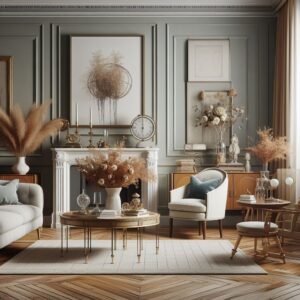The Future of Industrial Design: Innovations Shaping the Next Generation of Products
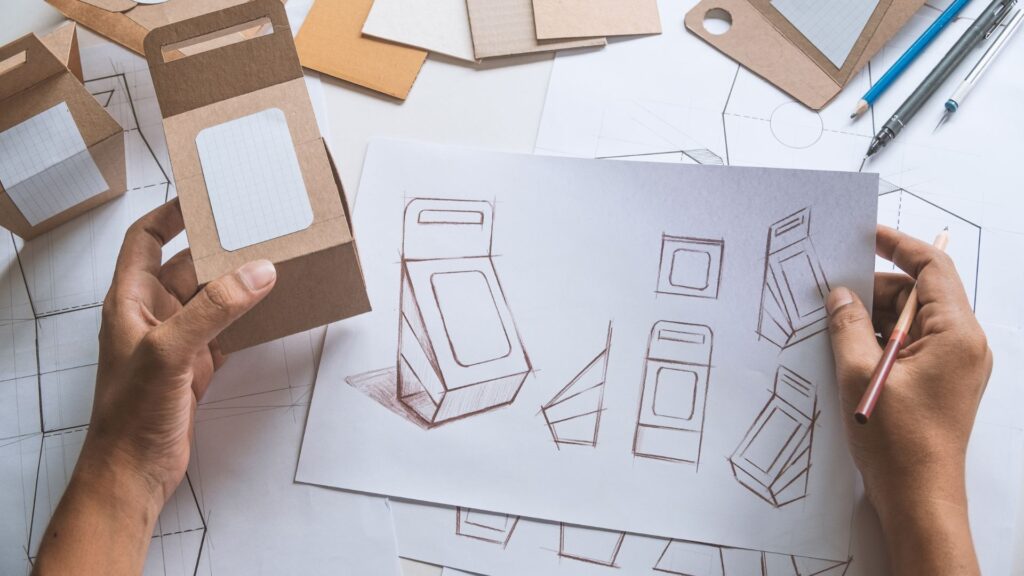
Industrial design, the creative process of designing products for mass production, is undergoing a transformative phase propelled by technological advancements and changing consumer preferences. As we stand on the cusp of a new era, it’s imperative to explore the innovations that are poised to shape the next generation of products. From smart manufacturing techniques to sustainable materials, the future of industrial design holds immense promise for revolutionizing the way we interact with everyday objects.
Just as industrial designers strive to create innovative products that enhance functionality and user experience, pharmacy management software optimizes medication management processes to improve patient care and operational efficiency.
Integration of Artificial Intelligence
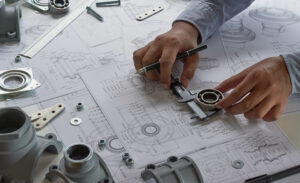
One of the most significant trends driving the future of industrial design is the integration of artificial intelligence (AI) into the product development process. AI algorithms are increasingly being employed to analyze consumer data, identify market trends, and generate design concepts. By leveraging machine learning and predictive analytics, designers can gain valuable insights into user preferences and behavior, enabling them to create products that are not only aesthetically pleasing but also functionally superior.
Just as industrial designers push boundaries to create cutting-edge products, a fence company in St Augustine combines skilled craftsmanship with modern materials to deliver fences that seamlessly integrate with their surroundings while providing security and style.
AI-powered design tools are streamlining the prototyping process, allowing designers to explore a myriad of design variations rapidly. Moreover, AI algorithms can optimize designs for manufacturability and performance, leading to more efficient production processes and cost savings. As AI continues to evolve, we can expect to see further advancements in generative design, where algorithms autonomously generate innovative design solutions based on predefined parameters and constraints.
The integration of AI into industrial design also extends to the realm of virtual reality (VR) and augmented reality (AR). Designers can now immerse themselves in virtual environments to visualize and iterate on product designs in real-time. This not only enhances the design process but also facilitates collaboration among multidisciplinary teams spread across the globe. As AI technologies mature, we anticipate a paradigm shift in the way products are conceptualized, designed, and brought to market.
The precision and expertise demonstrated by door installers in New Jersey serve as an analogy for the meticulous thought and craftsmanship inherent in the evolution of industrial design.
Sustainability and Circular Design
Another key aspect shaping the future of industrial design is the growing emphasis on sustainability and circular design principles. With increasing awareness of environmental issues and resource scarcity, consumers are demanding products that are not only eco-friendly but also designed for longevity and recyclability. In response, designers are reimagining traditional manufacturing processes and materials to minimize waste and carbon emissions.
One of the emerging trends in sustainable design is the use of biodegradable and renewable materials sourced from natural resources. From plant-based plastics to sustainable textiles, designers are exploring innovative materials that have minimal environmental impact throughout their lifecycle. Additionally, circular design principles advocate for products that can be disassembled, repaired, and recycled at the end of their lifespan, thereby reducing the burden on landfills and conserving finite resources.
Much like industrial design evolves to enhance user experiences with products, UX design services focus on optimizing digital interfaces for a seamless and intuitive user journey.
Designers are also embracing the concept of upcycling, where discarded materials and components are repurposed to create new products with added value. This not only reduces waste but also fosters creativity and innovation in the design process. By adopting sustainable practices and embracing circular design principles, industrial designers have the opportunity to drive positive change and contribute to a more sustainable future for generations to come.
Personalization and Customization
In an era of mass production, personalization and customization are emerging as key drivers of consumer engagement and brand loyalty. Today’s consumers crave products that reflect their individuality and cater to their unique needs and preferences. Industrial designers are leveraging advanced technologies such as 3D printing and mass customization platforms to fulfill this demand for personalized experiences.
Just as industrial designers adapt to changing consumer preferences, loan servicing software for hard money lenders adapts to the evolving demands of hard money lending, streamlining processes and enhancing efficiency.
3D printing, also known as additive manufacturing, enables designers to create highly customized products with intricate geometries and complex structures that would be impossible to achieve using traditional manufacturing methods. From personalized consumer electronics to custom-fit apparel, 3D printing empowers consumers to co-create products that are tailored to their specifications.
Mass customization platforms leverage AI algorithms to analyze user data and preferences, enabling brands to offer personalized product recommendations and design options. By involving consumers in the design process, brands can foster a sense of ownership and loyalty, leading to increased customer satisfaction and brand advocacy.
Just as industrial design envisions and shapes the physical products of tomorrow, themed environments visualize and bring to life unique atmospheres and experiences.
As technology continues to advance, we can expect to see further innovations in the realm of personalization and customization. From AI-driven design assistants to immersive virtual shopping experiences, the future of industrial design is poised to deliver unprecedented levels of customization and consumer empowerment. By embracing these trends, brands can differentiate themselves in a crowded marketplace and forge deeper connections with their customers.
Innovations in Material Science
Material science plays a pivotal role in the evolution of industrial design, enabling designers to push the boundaries of what’s possible in terms of functionality, aesthetics, and sustainability. In recent years, there has been a surge of innovation in materials science, with researchers and designers exploring novel materials and fabrication techniques. One exciting development is the emergence of biomimetic materials inspired by nature’s design principles. These materials mimic the properties of natural materials such as bone, wood, and spider silk, offering unparalleled strength, flexibility, and biocompatibility.
Just as designers aim to create products that seamlessly integrate into our lives, legal document signing innovations strive for a harmonious blend of convenience and security, shaping the landscape of legal transactions.
Nanotechnology is another frontier in material science that holds immense promise for industrial design. By manipulating materials at the nanoscale, researchers can create materials with unique properties and functionalities. For example, nano-engineered coatings can enhance the durability and scratch resistance of surfaces, while nanocomposites offer lightweight and high-strength alternatives to traditional materials. As nanotechnology continues to mature, we can expect to see a proliferation of innovative materials that revolutionize the way products are designed and manufactured.
The Rise of Biodesign
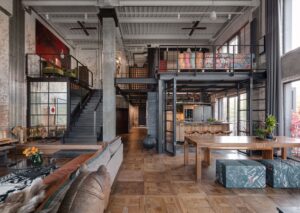
Biodesign, the intersection of biology and design, is emerging as a transformative force in industrial design. By harnessing the power of living organisms and biological processes, designers can create products that are not only functional but also responsive, adaptive, and sustainable. One area of focus in biodesign is biofabrication, where living cells are used to grow materials and products in a controlled environment. From bioleather made from engineered yeast cells to biodegradable packaging grown from mycelium, biofabrication offers a renewable and environmentally friendly alternative to traditional manufacturing processes.
Just like the industrial design emphasizes functionality and aesthetics, the best executive car service in Seattle prioritizes a seamless fusion of comfort and elegance in their fleet.
Synthetic biology is another field that is poised to revolutionize industrial design. By reprogramming the genetic code of living organisms, researchers can create organisms that produce valuable materials and chemicals with minimal environmental impact. For example, genetically engineered bacteria can be used to produce bioplastics from renewable feedstocks, reducing reliance on fossil fuels and mitigating plastic pollution. As our understanding of synthetic biology deepens, we can expect to see a proliferation of bioengineered materials and products that blur the boundaries between the natural and the artificial.
Human-Centered Design
At the heart of industrial design is the principle of human-centered design, which prioritizes the needs, preferences, and experiences of end-users throughout the design process. In an increasingly interconnected and digitized world, designers are leveraging technology to gain deeper insights into user behavior and preferences. User experience (UX) design, for example, employs techniques such as user research, usability testing, and prototyping to ensure that products are intuitive, enjoyable, and accessible to a diverse range of users.
Innovations in industrial design not only influence the aesthetics of future products but also have a direct impact on the need for pest inspection in Reno. As cutting-edge designs shape the next generation of products, the materials and structures involved may introduce new challenges related to pest control.
One emerging trend in human-centered design is the integration of biometric sensors and data analytics to personalize product experiences. By monitoring physiological signals such as heart rate, skin conductance, and brain activity, designers can gain real-time feedback on how users interact with products and tailor experiences accordingly. For example, smart wearable devices can adjust settings based on the user’s stress levels or mood, providing a more personalized and adaptive experience.
Another area of innovation in human-centered design is inclusive design, which aims to create products that are accessible to people of all ages, abilities, and backgrounds. From ergonomic furniture designed for people with disabilities to inclusive digital interfaces that accommodate diverse user needs, inclusive design principles ensure that no one is left behind in the design process. By embracing human-centered design principles, industrial designers can create products that not only meet the needs of users but also enrich their lives and enhance their well-being.
While designers strive to blend aesthetics with practicality to create impactful products, commercial plumbing services in Deerfield Beach meticulously install and maintain plumbing systems that seamlessly integrate into commercial spaces, emphasizing the importance of both visual appeal and operational efficiency in shaping the future of design and infrastructure.
The Future of Manufacturing
The future of industrial design is intricately linked to the future of manufacturing, as advancements in manufacturing technologies enable designers to bring their visions to life in new and innovative ways. One of the most transformative trends in manufacturing is the rise of digital manufacturing technologies such as additive manufacturing (AM) and subtractive manufacturing. AM, also known as 3D printing, enables designers to create complex geometries and customized products with unprecedented speed and precision.
Subtractive manufacturing techniques, such as computer numerical control (CNC) machining, are also undergoing rapid advancements, with the development of high-speed machining and multi-axis milling capabilities. These technologies enable designers to work with a wide range of materials, from metals and plastics to ceramics and composites, opening up new possibilities for innovation and creativity. As digital manufacturing technologies become more accessible and affordable, we can expect to see a democratization of the design and manufacturing process, with smaller companies and individual designers gaining the ability to compete on a global scale.
Another trend shaping the future of manufacturing is the emergence of distributed manufacturing networks, where products are produced locally using digital design files and automated manufacturing equipment. This decentralized approach to manufacturing reduces transportation costs and carbon emissions associated with traditional supply chains, while also enabling greater customization and on-demand production. With the advent of blockchain technology, distributed manufacturing networks can ensure transparency, traceability, and intellectual property protection throughout the production process. Just as designers harness technological advancements to shape the next generation of products, individuals seeking HRT therapy in Nolensville TN explore advanced medical solutions to enhance their well-being and address age-related concerns, showcasing the shared commitment to progress and improvement in these diverse fields.
Ethical Considerations in Design
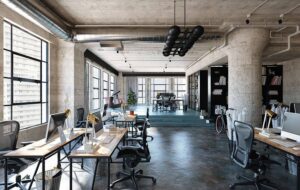
As industrial designers wield increasing influence over the products we use in our daily lives, there is a growing recognition of the ethical implications of design decisions. Designers have a responsibility to consider the social, environmental, and cultural impact of their work and to strive for ethical and sustainable solutions. One ethical consideration in design is the concept of design for social impact, which focuses on addressing pressing social issues such as poverty, inequality, and access to basic services.
Designers are increasingly collaborating with NGOs, nonprofits, and community organizations to develop solutions that address the needs of marginalized and underserved communities. From low-cost medical devices for remote healthcare to affordable housing solutions for refugees, design for social impact has the potential to create positive change and improve the lives of millions of people around the world. By prioritizing social impact in their work, industrial designers can use their skills and expertise to contribute to a more just and equitable society.
Another ethical consideration in design is the environmental impact of products throughout their lifecycle, from raw material extraction to end-of-life disposal. Designers are embracing principles of sustainable design, such as cradle-to-cradle design and life cycle assessment, to minimize the environmental footprint of products and promote a circular economy. By designing products that are durable, repairable, and recyclable, designers can reduce waste and conserve finite resources, leading to a more sustainable and resilient future. As we envision the future landscape of industrial design, it’s evident that innovations are shaping the next generation of products. Millimeter wave circulators are at the forefront of this revolution, offering unprecedented capabilities in high-frequency communication systems.
Conclusion
The future of industrial design is a convergence of technological innovation, sustainability, and human-centered principles. From biomimetic materials to biofabrication, from personalized experiences to distributed manufacturing networks, the next generation of products will be defined by creativity, ingenuity, and ethical responsibility. As industrial designers navigate this ever-changing landscape, it’s essential to embrace emerging trends and technologies that enable us to create products that not only delight and inspire but also promote a more sustainable and equitable world. By harnessing the power of design, we can shape a future where innovation serves the needs of people and planet alike.



